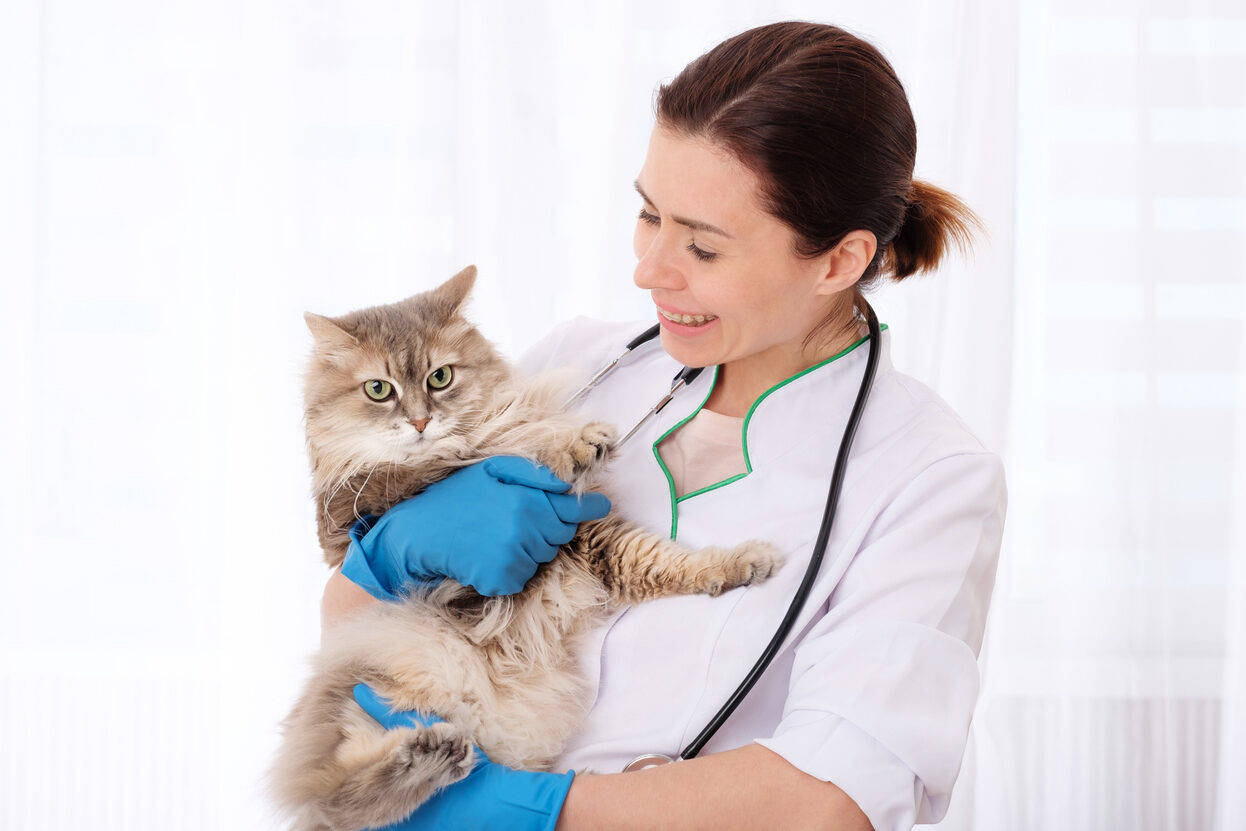It All Starts With a Little Sniffle

We’ve all been there—eyes itching, nose running, dignity gone—just because a dog wagged its tail too close. The culprit? A sneaky protein called Fel d 1 in cats or Can f 1 in dogs, which triggers those allergy alarms in sensitive humans. But scientists, apparently tired of watching us suffer through pet videos we can’t participate in, decided to poke around the animal genome and see if they could switch off the drama. Enter CRISPR, the gene-editing tool that’s basically the autocorrect of biology—only less annoying. It’s precise, powerful, and incredibly promising. Scientists are now dreaming of a world where you can roll around in a pile of kittens without a single sneeze.
Researchers are now using it to snip, silence, or even replace the genes that make pets produce these allergy-triggering proteins. Imagine telling your friend, “Oh yeah, my cat had a minor gene tweak last month—no more sniffles!” Feels very 2030s of us, right? But hold that thought, because things are about to get fluffier and freakier. This isn’t some far-off fantasy—some breakthroughs are already in early-stage trials. It’s not a matter of if but when this becomes part of everyday life.
Meet the Hypoallergenic Cat

For years, the only way to get a so-called “hypoallergenic” cat was to buy a breed that kind of made less of the allergy protein. Emphasis on kind of. Siberians, Bengals, and Balinese were all rumored to be easier on the immune system, but the truth? That was mostly clever marketing and a whole lot of hope. Now, scientists are skipping the guesswork and going straight to the gene source, using targeted editing to create cats that genuinely produce less or none of the offending proteins. It’s the scientific version of finally reading the manual instead of just winging it. With precision gene edits, the cat’s DNA is tweaked at the embryo level—way before the whiskers come in.
It’s like swapping out a chaotic roommate for someone who silently pays rent and never touches your stuff. Even better? These edits are made during early development, so the cat doesn’t “lose” anything—it just never gains the part that makes humans sneeze. The result: a totally normal, zoomies-at-3am feline… that won’t make you feel like your sinuses are staging a revolt. And yes, you can still expect dramatic stair poses and daily judgmental stares. Just without the red, itchy eyes to go with them.
But What If Removing That Protein—Changes Your Pet?

Great question, Sherlock. It turns out that Fel d 1 might not actually do much for cats. Researchers have studied feral and domestic cats alike, and there’s no clear evidence that the protein plays a major role in their health, hunting, or catnip addiction. It’s like that one group project member who shows up to the meeting but never contributes—you can delete them from the email thread, and no one notices. That’s good news, because it means fewer trade-offs in the name of comfort. No one wants to accidentally turn Garfield into an emotionally unavailable robot.
This means scientists might be able to remove or reduce the protein without turning your sweet tabby into an anxious mess. In fact, early studies on gene-silenced cats show they’re just as lively, quirky, and zoom-prone as their high-protein peers. So you get the cuddles without the congestion. Score. And even though we’re still early in this research, it’s looking more like evolution gave cats this protein “just because.” Now, we get to do the editing Mother Nature never got around to.
The DNA Revolution Has Entered the Chat

Gene-editing tools like CRISPR aren’t just for science fair winners and elite lab coats anymore. Thanks to huge strides in tech and accessibility, what used to cost a fortune can now be done faster, cheaper, and with far more precision. Scientists are testing these changes in labs using stem cells and embryos, carefully monitoring for side effects or unexpected quirks. And they’re not stopping at allergy proteins—some are exploring genetic tweaks for longer lifespans, stronger immune systems, or even traits like better coat shine. We’re talking about the possibility of dogs with shinier fur and cats that might live a little longer. It’s science, but it’s also love dressed in a lab coat.
It’s like upgrading your iPhone, but for pets. Of course, ethics teams are watching closely—this isn’t about making designer animals, but creating a world where more people can experience the joy of pet companionship without the misery. Every lab breakthrough brings us one step closer to a pet-loving utopia where allergies don’t stand a chance. The more accessible these tools become, the more likely everyday pet parents can benefit from them. Someday soon, your vet visit might include a “gene screen” menu right next to vaccinations.
How Trials Are Already Underway

This isn’t just some theoretical idea locked behind lab doors—real-life trials are happening right now. Scientists are experimenting with gene-edited animals in controlled environments, starting with mice and moving toward our four-legged faves. These trials help researchers watch for any health issues, behavior changes, or unexpected effects from gene silencing. So far, early results are promising. The animals remain healthy, active, and very much themselves—just without the proteins that make us sneeze our faces off. It’s the kind of progress that makes you want to pet a lab rat in gratitude.
Researchers are cautious, of course—ethics boards and safety protocols are the unsung heroes of this process. But the fact that these trials are even happening means the allergy-free pet of your dreams is more real than ever. The best part? These studies aren’t just happening in hush-hush top-secret labs—they’re being published, peer-reviewed, and shared with the world. It’s transparency with a tail wag. And maybe, just maybe, your next visit to the animal shelter will feel a bit more welcoming to your immune system.
Allergies, Meet Your Match

Before you start building a cat castle or adopting three golden retrievers, a reality check: this science is still in the early stages for real-world pet application. While lab results are glowing, we’re not yet at the “order your allergy-free puppy online” level of convenience. Regulatory approvals, long-term testing, and ethical debates still need to play out. But let’s be real—that’s just how every major innovation starts. Think of where smartphones were in the early 2000s… now picture a sneeze-free Pomeranian in your future.
Patience isn’t just a virtue—it’s a necessity here. As science evolves, so does our understanding of the long-term impact of gene-edited pets. Until then, you’ll still want to keep that antihistamine handy. But isn’t it nice to know there’s hope beyond nasal sprays and pet-less homes? Science is gently ushering us into a world where love doesn’t come with itchy eyes. And that’s something worth waiting for.
The Ethics Side of Things

As with all powerful technology, CRISPR raises a lot of important ethical questions. Should we be editing animals for human comfort? Are there lines we shouldn’t cross in the name of convenience? Some argue we’re playing God, while others say we’re just playing catch-up with nature. It’s a classic debate: innovation vs. preservation. And as much as we’d love a sneeze-free snuggle, we can’t ignore the bigger picture.
That’s why these projects are being reviewed by ethicists, animal rights advocates, and global scientific communities. The goal isn’t to turn pets into customizable plush toys—it’s to improve human-animal connection while preserving animal dignity. Think less “Build-a-Bear” and more “Build-a-Bridge.” A bridge between what science makes possible and what compassion deems responsible. Because at the end of the day, it’s about love—and that should always come with a conscience.
A Future Without Pet Allergies Is Closer Than You Think

We’re standing at the edge of something wild: a world where your pet doesn’t need to come with a box of tissues and a prescription. Thanks to rapid scientific progress, what once sounded like sci-fi is becoming solid fact. Imagine a future where no kid has to say goodbye to their puppy because of hives. Or where you can cuddle your roommate’s cat without doing a dramatic tissue-commercial-style nose blow. It’s not just about comfort—it’s about inclusivity.
Because love for animals is universal… but allergies aren’t. And as science cracks the code, more people can finally join the ranks of happy pet owners. It’s a win for humans, a win for animals, and a huge win for living room furniture that no longer has to suffer from dramatic allergy-induced flailing. So go ahead—dream about that cat café visit. It might be closer to reality than you ever thought possible.


